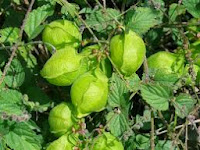Family : Poaceae
Common name : Oat
Other Common names: Groats, herb oats, oatgrass, oats, wild oats.
Habitat : Oat straw grows in moderate temperatures such as Northern Europe and Kashmir. It grows well in dry wastelands, cultivated ground and meadows alike. It is a hardy zone 2-type plant that can be grown in heavier soils although it normally prefers sandy or loamy soils. It requires good drainage but can grow in a high acid soil. It does require sun, and cannot grow in the shade.
Oat straw tolerates drought well. Although it is widely distributed as a cereal crop it is just as often found in garden beds, or planted to prevent soil erosion. The fruit, seeds and straw are typically gathered in August.
Plant Description : The
oat straw plant is an annual grass. It stands erect with a flat, rough, but elongated leaf. It has a golden seed shaped much like a spindle. It is in flower during June and July. The seeds ripen from August to October. The flowers have both male and female organs, and are pollinated by the wind.
Chemical Constituents: Saponins, alkaloids (trigonelline and avenine), a sterol, flavonoids, starch, protein (gluten), fats, minerals (including silica, iron, calcium, copper, magnesium, zinc), vitamin b
Plant Parts Used: Grain, straw, and seed. When the seed is harvested and dried – also in late summer – it can be stored for several years. It has a texture similar to flour and puts forth a mild, creamy flavor.
Medicinal use of wild Oats : Whilst used mainly as a food, wild oat grain does also have medicinal properties. In particular Wild Oats are a nutritious food that gently restores vigour after debilitating illnesses, helps lower cholesterol levels in the blood and also increases stamina. The seed is a mealy nutritive herb that is antispasmodic, cardiac, diuretic, emollient, nervine and stimulant. The seed contains the antitumor compound b-sitosterol and has been used as a folk remedy for tumours. A gruel made from the ground seed is used as a mild nutritious aliment in inflammatory cases, fevers and after parturition. It should be avoided in cases of dyspepsia accompanied with acidity of the stomach. A tincture of the ground seed in alcohol is useful as a nervine and uterine tonic. A decoction strained into a bath will help to soothe itchiness and eczema. A poultice made from the ground seeds is used in the treatment of eczema and dry skin. When consumed regularly, oat germ reduces blood cholesterol levels. Oat straw and the grain are prescribed to treat general debility and a wide range of nervous conditions. They are of particular value in helping a person to cope with the exhaustion that results from multiple sclerosis, chronic neurological pain and insomnia. Wild Oats are thought to stimulate sufficient nervous energy to help relieve insomnia. An alcoholic extraction of Wild Oats has been reported to be a deterrent for smoking, though reports that oat extract helped correct the tobacco habit have been disproven. A tincture of the plant has been used as a nerve stimulant and to treat opium addiction.
Attention Deficit Disorder : Avena sativa can alleviate symptoms of Ritalin withdrawal, as well as ease milder forms of adult depression with people who have this disorder. This herb has a medicinal action relative to opium, which explains its effectiveness in calming those who take it.
Eczema : When used in oatmeal baths, avena sativa may help in healing inflamed skin.
Nervousness and Menopause : As it gives balance to the nervous and hormonal systems, avena sativa reduces hot flashes, stabilizes blood sugar, eases symptoms of premenstrual syndrome, anxiety, insomnia and exhaustion. For premenstrual syndrome relief, this herb must be taken daily for two weeks out of the month.
Sex Drive : This herb has been linked to increased pleasure during sexual intercourse in men and women. The increased pleasure is due to more testosterone in the bloodstream. This hormone is a significant factor in maintaining a healthy sex drive.
Quit smoking : It also is used to detoxify the body, reduce anxiety, decrease nicotine cravings, and improve sleep habits.
Dosage and Administration : Taken as an extract the typical dosage of oat straw is around 2-3 tsp to 1 cup of boiling water and then leave it for 10-15 minutes before drinking. As an alcohol tincture the typical dosage is 3-5 ml 3 times each day. For the use in the bathtub, make an infusion adding around 1 pound oat straw to 2 quarts boiling water and leave it for 30 minutes.
Side Effects and Possible Interactions of Oat Straw : Eat whole grain oats as often as you can, however, be aware that the prepackaged, instant oatmeal mixes sold today have been stripped of the nutrient value and are filled with refined sugars. For oatstraw tea, it is best to ensure that it is organically grown. In selecting the dried herb for tea, choose seeds that are green to green-yellow, seeds are stronger medicinally than the stems.
Avena sativa seeds are available only at:
Available in : 25.50,100 seeds per packet
Only for research purpose not for commercial use.
Seeds are open-pollinated,Organic from Kashmir Himalaya
The Jammu and Kashmir medicinal Plants Introduction Centre
"Ginkgo House", Nambalbal,
New Coloney Azizabad,
Via Wuyan-Meej Road,
Pampore PPR J&K 192121
Mob:09858986794
Ph: 01933-223705
e-mail: jkmpic@gmail.com
home:
http://jkmpic.blogspot.in















